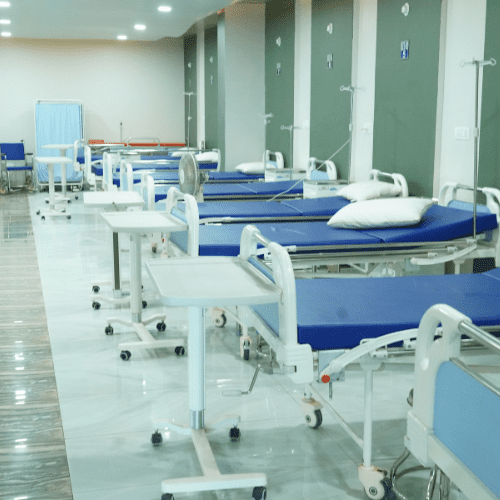In an era where the quest for early detection and accurate diagnosis is more crucial than ever, nanotechnology emerges as a game-changer in the field of medical diagnostics. This cutting-edge technology harnesses the power of materials at the nanoscale, which is about 1 to 100 nanometers, to create innovative diagnostic tools that promise to revolutionize how we detect diseases. By integrating nanotechnology into diagnostic practices, we are not only enhancing our understanding of health but also paving the way for personalized medicine that could lead to more effective treatments. Let’s delve into the tiny tech that is making monumental waves in the world of diagnostics!
Tiny Tech, Big Breakthroughs: Nanotech in Diagnostics!
Nanotechnology is reshaping the landscape of medical diagnostics in exciting ways. By manipulating materials at the nanoscale, scientists have developed highly sensitive sensors capable of detecting minute quantities of biomolecules associated with various diseases. For example, gold nanoparticles can bind to specific biomarkers in blood or saliva, signaling the presence of conditions such as cancer or infectious diseases. This level of sensitivity means that diagnoses can be made earlier and more reliably than ever before, which is crucial for successful treatment outcomes.
Moreover, the versatility of nanomaterials offers endless possibilities for creating innovative diagnostic tools. Quantum dots, for instance, are semiconductor nanocrystals that exhibit unique optical properties, allowing them to be used as fluorescent markers in imaging techniques. These tiny yet powerful particles can illuminate cellular processes and help identify pathological changes in tissues, providing invaluable insights for doctors. As researchers continue to explore the potential of nanotechnology, we can expect a plethora of new diagnostic devices that promise rapid, accurate results while being minimally invasive.
Importantly, nanotechnology is also making diagnostics more accessible. Traditional testing methods can be cumbersome and costly, often requiring extensive laboratory equipment and specialized personnel. However, with the development of portable, nanotechnology-based diagnostic devices, patients can receive rapid results at the point of care. This democratization of healthcare ensures that more people, regardless of their location or financial situation, have the opportunity to obtain timely and precise diagnoses.
Discovering Health Secrets: The Nanotechnology Revolution!
As we stand on the brink of a new frontier, the potential applications of nanotechnology in diagnostics are staggering. One particularly promising area is the detection of infectious diseases. Researchers are now developing nanoscale biosensors that can rapidly identify pathogens in bodily fluids, enabling healthcare providers to make swift decisions regarding treatment. This could be a game-changer in managing outbreaks and ensuring that patients receive the appropriate care without delay, significantly reducing the risk of complications.
Beyond infectious diseases, nanotechnology also holds incredible promise in cancer diagnostics. Utilizing nanoscale imaging agents, scientists can visualize tumors with unprecedented clarity, allowing for precise localization and characterization. This enhanced imaging capability not only aids in early detection but also assists in monitoring treatment responses, providing a more comprehensive picture of a patient’s health journey. The ability to tailor treatment based on real-time diagnostic data could transform the way oncologists approach cancer care.
In addition to disease detection, nanotechnology is paving the way for personalized diagnostics that consider individual patient profiles. By analyzing a patient’s unique genetic makeup with the help of nanotechnology, healthcare providers can identify predispositions to certain conditions and tailor preventive measures or treatments accordingly. This shift toward personalized medicine ensures that patients receive the most effective care and empowers them to take charge of their health in a way that was previously unimaginable.
In conclusion, the fusion of nanotechnology with medical diagnostics is nothing short of revolutionary. From enhancing sensitivity and specificity in disease detection to enabling personalized treatment strategies, the potential benefits are immense. As we continue to explore this exciting frontier, the promise of nanotechnology could transform healthcare into a more proactive, efficient, and patient-centered system. With each advancement in this tiny tech, we are not just uncovering health secrets but also opening new doors to a healthier future for all. The future of diagnostics looks bright, and it’s all thanks to the wonders of nanotechnology!




